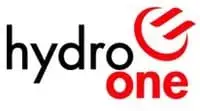Campaign aims to lower power use in peak times
By Salt Lake Tribune
Protective Relay Training - Basic
Our customized live online or in‑person group training can be delivered to your staff at your location.

- Live Online
- 12 hours Instructor-led
- Group Training Available
For the seventh year in a row, Utahns will be able to find out when that critical point is about to be reached courtesy of the "PowerForward" campaign, an early warning system sponsored by the state's Department of Environmental Quality and Utah's electric utilities.
"Ideally, we won't have to declare any yellow (or red) alerts this summer," said Glade Sowards, energy program coordinator for the DEQ. "A lot of it, though, is going to come down to the weather."
The PowerForward campaign for this summer was officially launched June 5.
The campaign, which uses a color-coded system, attempts to alert as many consumers as possible using e-mail messages, news media announcements and Web site warnings about the need for energy conservation.
Green indicates Utahns should adopt whatever conservation measures they see fit. A yellow or red warning asks consumers to take extra steps to help reduce power consumption, particularly during the hours of peak use, between noon and 8 p.m.
There were 10 yellow-alert days declared last summer and no red alerts.
Among the voluntary conservation steps Utahns can take to help relieve pressure on the state's electrical grid are raising temperatures in homes so air conditioning systems doesn't kick on as often, turning off the television set or not using electric ranges to prepare dinner.
There are several situations that can prompt the state's largest electrical utility to ask operators of the PowerForward program to declare a yellow alert, said Dave Eskelsen, spokesman for Rocky Mountain Power. "They all have to do with a combination of temperature and market prices for electricity."
Rocky Mountain Power will ask for a yellow alert if the temperature at the Salt Lake City International Airport is projected to be above 100 degrees the next day, or if the temperature is forecast to be 96 degrees or higher and the market price of a megawatt of electricity is above $117 on the short-term market.
The company has determined when the price to secure power in the short term gets above $117 per megawatt, the expense of buying that electricity starts to become a problem for its customers, who ultimately have to pay for that power.
"In that instance, by declaring a yellow alert we hoping to avoid purchasing that high-priced power," Eskelsen said.
Also, a yellow alert will be requested if the temperature is forecast above 96 degrees or more and there is a minimum of three consecutive nights of 70-degree temperatures or higher. "If there is a lack of night-time cooling, our transformers are unable to operate as efficiently the next day," he said.
Red alerts will be declared only when there is a serious problem with the electrical grid system, such as the failure of a major transmission line or a generating plant developing a serious problem and suddenly and unexpectedly going off line, Eskelsen said.
"A red alert will signify there is a serious threat to the integrity of the electric grid and that a major blackout is possible," he said. "Were a red alert declared, we'd be asking Utahns to discontinue all nonessential uses of electricity."
In the seven years since then-Gov. Mike Leavitt unveiled the PowerForward program, there has never been a red alert.
During the summer months, Rocky Mountain Power delivers the most electricity of any time of the year. Electricity use typically rises in the afternoon and early evenings as Utahn return homes from their jobs and crank up their air conditioning systems.











